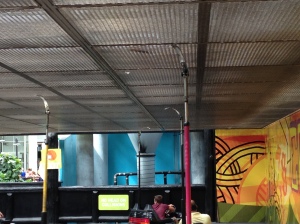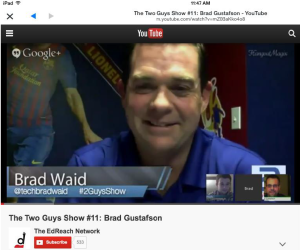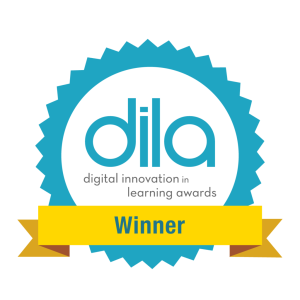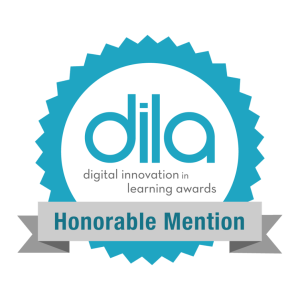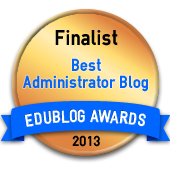Blog Archives
Maximum Impact
There’s no other way for me to say this…being a Connected Educator has transformed my life and thinking. Using tools like Twitter and Voxer to collaborate with people across the planet has been one of the most exhilarating and humbling endeavors of my life. The energy and co-mingling between my Personal Learning Network (PLN) and colleagues at school helps me deliver a maximum impact for kids.
At a recent family trip to the Mall of America, I was struck by the obvious reliance a bumper car has on the network of metal grates in the ceiling; my PLN is like an unceasing and conductive ceiling constantly sparking my learning.
The AMAZING staff and team we have at our school fuels a collective effort to make a difference for each and every child…together we’re able to handle the bumps and detours that are inherent in any innovative learning organization.
Most bumper cars rely on a conductive floor AND ceiling (each with differing polarities). The pole at the top of a bumper car touches the ceiling, while the contacts on the floor complete a powerful circuit. The resulting connection is rather effective…and tons of fun!
- Where do you get your energy and “spark” from?
- How are you able to make a maximum impact for kids each day?
- How do you remain relevant?
- Who inspires you to collaborate and grow?
We need to be constantly evolving and growing because our students’ world is changing. Our kids deserve relevant educators. There’s a world of collaborative educators out there willing to help…be sure to complete the circuit!
Together We’re Better for Kids

I rely on my PLN to share innovative ideas about pedagogy and opportunities for students. I took this photograph of a MakerBot while attending ISTE 2014.
Being connected on Twitter, Voxer, etc. has been a powerful supplement to the relationships I cherish with the dedicated teachers in our school. In fact, the connections we’re cultivating that started out on Twitter have had a direct impact on our students.
Our school has had a core group of teachers collaborating the past year on 21st century learning spaces to promote student engagement, creativity, and innovation. Staff have conducted site visits at other schools and met after school to collaborate on a regular basis. Their work has been inspiring, and I could go on for days about how phenomenal our team is.
As part of our conversations we have discussed bringing a MakerSpace to our school. The purpose of these conversations and a potential MakerSpace has been centered on cultivating an ethos of student learning made possible through passion-based learning, experimentation, creation, risk-taking, failure, and design iteration. I learned about the MakerSpace concept via my Personal Learning Network (PLN).
My connections on Twitter equipped me with additional research on MakerSpaces and 3D printers to contribute to the conversations. Drew Minock, a friend in my PLN that I met via Twitter, took time to explain how he wrote a DonorsChoose.org grant for a 3D printer in his classroom. We spoke a couple times via the telephone until I was ready to work with teachers interested in writing a grant in our school. We submitted a grant and our project is now fully-funded! Members of my PLN helped spread the word and retweeted project information. We even had several people that I only know through Twitter donate to our students. The process has been humbling!
Twitter has been a game-changing tool that empowers educators to forge supportive, student-centered relationships with one another from anywhere on the planet. Twitter was the primary tool I used to connect to research about MakerSpaces and 3D printers. Twitter was how I learned about DonorsChoose.org. Twitter connected me to caring parents and educators across the country that also wanted to support students and our 3D printer project. However, this story isn’t really about Twitter; it’s about what some of these connections will mean for our students. When school starts this fall, our students will have an unbelievable opportunity to innovate using cutting-edge technology.
Together we are better for kids, and our students are the ultimate winners when educators collaborate within and across classrooms, schools, and states! Our MakerSpace project would not have been possible without an AMAZING team of educators at Greenwood Elementary…and the positive power of PLN.
Finding Twitter
Since finding Twitter, my professional growth and love of learning has been supercharged. Being a “connected educator” has contributed to my being able to more effectively serve our school while increasing my ability to provide digital leadership.
Twitter provides me 24-7 access to research on best practices, blogs from innovative teachers, and information about communication tools that principals are using across the country. Best of all, I have access to the creative work that authors, educators and parents are sharing around the globe thanks to the Professional Learning Network (PLN) we’re building. Twitter allows me to share some of the amazing things that our talented staff and students are doing every day as well.
It is difficult to explain the sensation of being a connected educator until you’ve experienced the impact first-hand. Instead, I offer an analogy that comes pretty close in the hopes you will consider getting connected.
Do you remember the East Australian Current (EAC) scene from the movie, Finding Nemo? That rapid and exciting ocean current that connects warm water from the tropical Coral Sea down the east coast of Australia is very much like Twitter. Those that are not a part of the EAC never really miss it…yet they may be missing out on the trip of a lifetime.
Let me explain. The fish that are meandering happily outside the EAC are perfectly content. In fact, they are probably thriving just like many amazing educators that have not discovered the power of Twitter yet. (Just like me before I took the plunge!) Once a fish breaks through the initial confusion and misperceptions of the EAC he’s in for the experience of a lifetime…just like Twitter.
I’m often inspired as I visit classrooms in the school I serve. The work that teachers are doing is truly amazing. Twitter is a tool that allows each of us to share our experiences and connect to others for additional support and perspective. Chances are that YOU can add value to somebody else’s PLN too!
Consider expanding your bubble and growing your PLN. When educators collaborate on their craft and embrace a learning mindset our students win!
Image Credits: Disney/Pixar
Reflective Practitioners: Phases of AR in Education
Last evening I was engaged in a collaborative discussion on Twitter with two connected educators; Brad Waid and Kristen Eveland. We were discussing the possible phases of Augmented Reality (AR) in Education. The diagram above represents many of the ideas we brainstormed, and if you click on the image you’ll see a more complete PDF with one possible application of AR.
It’s important to point out that the phases are not intended to represent a hierarchy, and as such the “Awareness” level seemingly encompasses all of the phases. There is certainly a comingling between different phases; certain Augmented Reality apps are inherently more equipped to allow for “Creation” than others. However, I strongly feel that innovation is possible with most of the AR apps available to educators today.
What I valued most about our dialogue wasn’t the topic (although I LOVE the possibilities that AR presents). I appreciated the deeper reflection and questions that our exchange generated. Late in the evening on a Saturday night we were brainstorming the hows & whys of a game-changing tool. It was also clear that the comments that Brad and Kristen shared were in support of creating an engaging student learning experience.
Connecting with fellow educational leaders to reflect on our practice and discuss the purpose of what we are doing for our students is one of the many things I value in my Professional Learning Network (PLN). A special thanks to @TechBradWaid & @KEveland2 for their sharing.
What are your thoughts on the phases of AR in Education? What did we miss?
Getting Connected
Greenwood Elementary is filled with talented professionals committed to the success of each and every child. Connecting with students and staff on a daily basis is one of the priceless privileges I have as principal.
Lately, I’ve also had the opportunity to share some of the things our school is doing to engage students via Twitter. It’s difficult to explain the magic our teachers bring to their classrooms in under 140 characters, so some of the collaboration has spilled over into video-conferencing and direct messaging. (Twitter has been invaluable to my own professional development and getting connected was one of the best moves of my career as a leader/learner.)
I recently had the opportunity to visit with two game-changing educators, Drew Minock and Brad Waid, from Bloomfield Hills Schools in Michigan. We met on a popular podcast they host called the “2 Guys Show.” They also have a website www.twoguysandsomeipads.com
Click on the photo above to view a recording of the live show. We had a blast discussing meaningful technology integration, Augmented Reality (AR) and making a difference for kids! A memorable moment from the show for me was the “AR Ambush” that occurred. You won’t believe how cool Brad Waid was under pressure and how he reacted to the Augmented Reality surprise!
I’d be remiss if I didn’t thank the entire team at Greenwood Elementary for the passion they bring to our shared journey together, as well as the countless others that enrich my Professional Learning Network (PLN).
You can follow Brad and Drew on Twitter at:
@TechMinock
@TechBradWaid
What a Summer!!
This has been one of the most professionally rewarding summers I’ve had in a long time. I’m taking some doctoral classes and have been immersed in some rich dialog and learning with some really neat friends and colleagues at Bethel University. Our journey together as researchers has spanned three summers now, and the cohort I’m in has been a blessing.
I’ve also begun to expand my Professional Learning Network (PLN). The teachers, administrators and authors I’m learning from have made me a more connected principal. It’s been an amazing adventure and some of the educational technologies that I’m most excited about right now would not even be on my radar if it weren’t for my PLN.
Best of all, I’m able to take some of the innovative tools that I come across and share them with staff members at our school who are also exploring areas of passion. Together we are really integrating some neat ideas and opportunities for students in our school!
Without further ado, here are my (current) favorite educational technology tools:
1.) Twitter. Connect, learn, grow, share, rinse & repeat. Need I say more? Hands down the biggest difference maker for me as a reflective and connected principal.
2.) Aurasma. Although I’m just scratching the surface of Augmented Reality (AR) apps, this one is a keeper! It has ignited my imagination and the power of AR to bolster student creation, imagination, excitement, communication and creativity is limitless. I originally entertained thoughts that this app may just be a glorified QR code generator, but it’s so much more. To see a VERY basic example of what Aurasma can do check out my AR Resources page on this blog (second tab).
 3.) TouchCast. Got communication? This app has all the bells and whistles you’d ever want to start creating your own podcasts. Best of all….it’s easy to learn and has a very professional aesthetic. I’ll admit my first TouchCast was an epic fail, but sometimes that’s where the best learning occurs. If you’ve ever pondered replacing a traditional classroom/school newsletter with an interactive podcast that’s intuitive and fresh TouchCast is a MUST SEE. Love. This. App.
3.) TouchCast. Got communication? This app has all the bells and whistles you’d ever want to start creating your own podcasts. Best of all….it’s easy to learn and has a very professional aesthetic. I’ll admit my first TouchCast was an epic fail, but sometimes that’s where the best learning occurs. If you’ve ever pondered replacing a traditional classroom/school newsletter with an interactive podcast that’s intuitive and fresh TouchCast is a MUST SEE. Love. This. App.
 4.) Smule (Auto Rap). Ever wish you were a rap star? This speech converter is my wife’s nemesis! A principal named Curt Rees shared this one with me, and I spent the better part of a day creating school related rap songs with my three young kids. Can you imagine the creative potential in an elementary classroom? Instead of a summative assessment at the end of a unit, how about a solid rubric and Smule’s Auto Rap App?!! PS – Here’s a sample off my kids’ first solo album: http://khush.smule.com/autorap_52195b7a1902c&v2
4.) Smule (Auto Rap). Ever wish you were a rap star? This speech converter is my wife’s nemesis! A principal named Curt Rees shared this one with me, and I spent the better part of a day creating school related rap songs with my three young kids. Can you imagine the creative potential in an elementary classroom? Instead of a summative assessment at the end of a unit, how about a solid rubric and Smule’s Auto Rap App?!! PS – Here’s a sample off my kids’ first solo album: http://khush.smule.com/autorap_52195b7a1902c&v2
5.) WordPress. I really enjoy writing, reflecting and sharing. WordPress has been a fun new tool to connect with others and document some of my own learning as a school leader. (Thanks for reading this blog by the way.)
“Connected” Principle #1: Be Your Best Pineapple
If you’ve ever tried to be somebody you are not…this blog post is for you. If you’ve tried to do every cool thing found on Pinterest or Twitter in the same school-year…keep reading. And, if there’s anybody in your Professional Learning Network (PLN) that you want to be more like….you’re not alone. Aspiring to grow and develop as a reflective practitioner is important.
In many respects, growth and change are NOT optional. We cannot confine students to our own status quo; their ability to thrive in this global, hyper-connected environment depends on our readiness to learn! That’s one of the primary reasons we connect with each other using Web 2.0 technologies.
However, students need professionals that are also comfortable leveraging, developing and sharing their own strengths. Stay with me…here’s where the pineapple comes in.
While enjoying an anniversary grilled lunch with my wife recently, I looked at a shish kabob and began to draw connections to educational vision, collaboration and synergy; this analogous thinking can be an affliction, but it makes for interesting conversation at dinnertime!
Now back to the shish kabob. The most magnificent thing about a grilled kabob is the glorious manner in which a diverse group of meats, veggies, and marinades commingle to create something that could not be accomplished individually. Can you imagine if a fresh piece of grilled pineapple was so enamored with the beautiful, buttery goodness of a grilled red potato that it was consumed with actually becoming a spud? Or what if that same pineapple absent-mindedly aspired to take on the best attributes of all of its other skewered companions? Sounds unrealistic, right?!
The truth is…a pineapple doesn’t need to become a potato or any other kabob ingredient; a pineapple’s only job is to embrace its “pineappley goodness” (and stay connected to the kabob skewer so it doesn’t perish in the bottom of the grill).
We’ve all been impacted by inspiring educators doing really great things for kids. I work alongside some of the best in the business, and also follow some really amazing teachers and principals on Twitter as well. Learning from our PLN and connecting with them can be a magnificent thing. However, it’s probably unrealistic to do all of the best things that others are sharing.
I recently had a revelation; when I focus on just a few difference makers, or key “change” ingredients, I’m more effective and can better support those around me. Instead of trying to actually become the potato…and steak…and green pepper, try learning with and from them.
What if a kabob consisted of only peppers?! Embrace your inner-self, collaborate, never stop learning…and above all, be your best pineapple!
Disclaimer: Author not responsible for any damage caused to your spell-checker by words made up in the aforementioned post.

